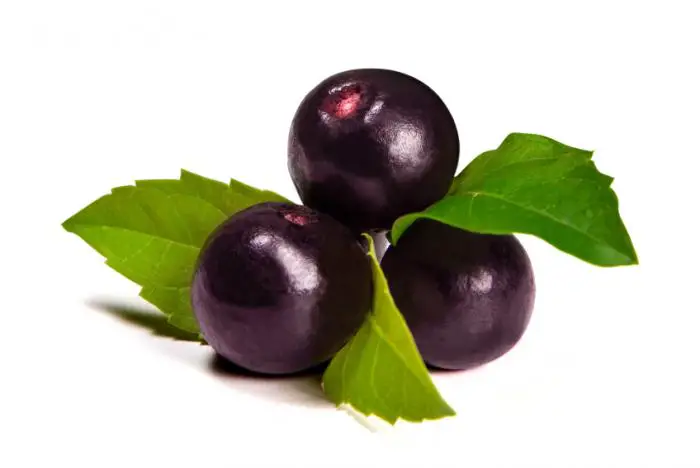Does Blending Fruit Destroy Fiber? Find Out Now!
Fruits are an essential part of a healthy diet due to their high nutritional content, including dietary fiber. Dietary fiber is a type of carbohydrate that cannot be digested by the human body. Instead, it passes through the digestive system relatively intact, providing various health benefits. When it comes to incorporating fruits into our diet, one popular method is blending. Blending fruits allows us to create delicious and convenient smoothies, but it raises questions about the retention of fiber during the blending process.
Understanding Dietary Fiber in Fruits
Dietary fiber in fruits can be classified into two main types: soluble fiber and insoluble fiber. Soluble fiber dissolves in water and forms a gel-like substance in the digestive tract. It helps slow down digestion, promote feelings of fullness, and regulate blood sugar levels. Insoluble fiber, on the other hand, does not dissolve in water and adds bulk to the stool, aiding in regular bowel movements and preventing constipation.
Does Blending Fruit Destroy Fiber?
The answer is No, blending fruit does not destroy fiber. While the blending process breaks down the physical structure of fruits, the fiber remains intact. Blending actually makes the fiber more accessible and easier to digest.
Also Read: Can You Bring Fruit On Plane? All you should know
Benefits of Dietary Fiber for Health
Consuming an adequate amount of dietary fiber is associated with several health benefits. Firstly, fiber aids in maintaining a healthy digestive system by promoting regular bowel movements and preventing constipation. Secondly, it can help manage weight by increasing satiety and reducing overall calorie intake. Additionally, dietary fiber plays a role in regulating blood sugar levels, improving heart health, and reducing the risk of certain chronic diseases, such as type 2 diabetes, heart disease, and colorectal cancer.
Blending vs. Juicing: Key Differences
Blending and juicing are both popular methods for incorporating fruits into our diets, but they differ in how they handle the fiber content. Juicing involves extracting the liquid from fruits, leaving behind the fibrous pulp. As a result, the juice contains minimal amounts of dietary fiber. On the other hand, blending involves blending whole fruits or pieces of fruit, including the pulp and fiber, into a smoothie-like consistency. This method retains the fiber content of the fruit.
Retention of Fiber in Blended Fruit
Blending fruits generally retains the fiber content of the fruit. The high-speed blending process breaks down the fruit into a smooth consistency while keeping the fiber intact. However, the degree of fiber retention may depend on various factors, such as the blending technique, blending duration, and the specific fruit being blended.
Also Read: Can Fruit Flies Make You Sick? Ways to resist it
Impact of Blending on Soluble and Insoluble Fiber
Blending fruits preserves both soluble and insoluble fiber. Soluble fiber, being softer and more easily broken down, remains intact in the blended fruit. Insoluble fiber, which adds bulk to the stool, may undergo some breakdown during blending but is still present in the blended fruit in a beneficial form.
Blending Techniques to Preserve Fiber
To maximize the retention of fiber during blending, certain techniques can be employed. Firstly, it is recommended to blend the fruit thoroughly to ensure even distribution of the fiber throughout the smoothie. Secondly, avoiding prolonged blending can minimize excessive breakdown of fiber. Finally, using high-powered blenders that are capable of breaking down tough fibers while maintaining the integrity of the fruit can help preserve the fiber content.
Factors That May Affect Fiber Retention in Blended Fruit
Several factors can impact the retention of fiber in blended fruit. The type of fruit being blended plays a role, as some fruits naturally have higher fiber content and more robust fibers than others. The blending technique and duration also influence the degree of fiber retention. Additionally, straining or filtering the blended fruit can reduce fiber content, as it removes some of the fibrous pulp.
Importance of Consuming Whole Fruits
While blending fruits can provide a convenient way to consume their fiber content, it’s important to note that whole fruits offer additional benefits. Chewing whole fruits promotes better digestion and may help activate certain enzymes in the mouth that aid in the breakdown of food. Whole fruits also require more effort to eat, which can increase satiety and promote mindful eating. Additionally, whole fruits often contain more antioxidants and phytochemicals in their skins or peels, which are lost during blending.
Fiber Content in Blended Smoothies
Blended smoothies can still be a good source of dietary fiber, depending on the ingredients used. The fiber content will vary depending on the types and quantities of fruits blended. For example, fruits like berries, apples, pears, and oranges are generally higher in fiber compared to fruits like bananas or watermelon. Including fibrous vegetables such as spinach or kale in the smoothie can further enhance the fiber content.
Blended Fruit vs. Whole Fruit: Fiber Comparison
When comparing the fiber content of blended fruit to whole fruit, it’s important to consider the volume consumed. Blended fruit typically contains the same amount of fiber as whole fruit of equivalent quantity. However, blending may change the texture and consistency of the fruit, which can affect the overall satiety and eating experience. Additionally, consuming whole fruit requires more chewing, which may enhance the feeling of fullness compared to drinking a blended smoothie.
Conclusion: Balancing Convenience and Fiber Intake
Blending fruits can be a convenient way to incorporate their fiber content into our diets, especially for those who struggle to eat whole fruits. Blended smoothies provide a quick and easy option to enjoy a variety of fruits and vegetables. However, it’s important to strike a balance between convenience and overall dietary fiber intake.
While blending retains the fiber content of fruits, consuming whole fruits offers additional benefits such as promoting better digestion, increased satiety, and providing a wider range of nutrients and antioxidants. Therefore, it is recommended to include both blended fruits and whole fruits in your diet to ensure a well-rounded intake of fiber and other essential nutrients.
Ultimately, personal preference, lifestyle factors, and individual dietary needs should guide the decision on whether to consume blended fruit or whole fruit. Incorporating a combination of both methods can help maintain a diverse and nutritious diet while enjoying the convenience and health benefits of fruits.
Also Read: Are Banana peels Biodegradable?
Frequently Asked questions
Q: Can blending fruits completely break down the fiber?
A: Blending fruits can break down the fiber to some extent, especially insoluble fiber that adds bulk to the stool. However, soluble fiber, which forms a gel-like substance, tends to remain intact during the blending process. Overall, blending retains a significant amount of fiber in the resulting smoothie, though the degree of fiber breakdown may vary depending on factors such as the blending technique and duration.
Q: Does blending destroy the nutritional value of fruits?
A: Blending fruits generally does not destroy their nutritional value. While blending may cause some oxidation and nutrient loss due to exposure to air, the impact is usually minimal. The resulting smoothie still contains a good amount of vitamins, minerals, antioxidants, and fiber. To maximize the nutritional benefits, it is advisable to consume the blended smoothie immediately after preparation and avoid prolonged storage.
Q: Are blended smoothies a good source of dietary fiber?
A: Blended smoothies can be a good source of dietary fiber, depending on the ingredients used. The fiber content of a smoothie will vary depending on the types and quantities of fruits and vegetables blended. Including fiber-rich fruits like berries, apples, and pears, as well as fibrous vegetables like spinach or kale, can enhance the overall fiber content of the smoothie. It is important to consider the fiber content of the individual ingredients when preparing a blended smoothie for optimal fiber intake.
Q: Can blending fruits lead to a spike in blood sugar levels?
A: Blending fruits can potentially lead to a faster release of natural sugars from the fruit, which may cause a temporary increase in blood sugar levels. However, the fiber content in the blended fruit can help slow down the absorption of sugars into the bloodstream, mitigating the impact on blood sugar levels compared to consuming fruit juice or refined sugars. It is generally recommended to include a variety of fruits and vegetables in the smoothie to balance the sugar content and optimize the overall nutritional value.
Q: Can I rely solely on blended fruit for my daily fiber intake?
A: While blended fruit can contribute to your daily fiber intake, it is generally recommended to consume a variety of fiber-rich foods, including whole fruits, vegetables, whole grains, and legumes. This ensures that you receive a broader spectrum of nutrients and other health benefits associated with different types of fiber. Additionally, whole fruits offer the added benefit of promoting better digestion and increased satiety. Balancing your diet with a combination of blended fruits and whole foods is the best approach to ensure an adequate intake of dietary fiber.


